7 Days is a weekly roundup of the Editors' picks of what's been happening in the world of technology - written with a dash of humor, a hint of exasperation, and an endless supply of (Irish) coffee.

Happy new year! We hit the ground running this week at the CES tech industry expo, where there were some truly exciting announcements… and one or two unexpected curiosities. If you’ve struggled to keep up with it all, fear not, for 7 Days is back after a short festive break, and here to guide you through the top stories from CES, and across the wider tech world.
Let’s waste no more time – there’s a lot to get through!

Our journey begins this week in the world of healthcare, as researchers have developed a new computer algorithm that can help to diagnose conditions such as ADHD and autism.

Meanwhile, over in the UK, the National Health Service is testing an app powered by artificial intelligence that can offer medical advice to patients based on the symptoms they describe.

Almost four months after its release, Apple revealed that iOS 10 is now installed on 76% of active iOS devices. The first iOS 10.3 beta is expected to arrive next week, with a mysterious new ‘Theatre Mode’.

A video published on Friday gave us our first look at an early prototype of an iPod-based operating system developed by Apple for its original iPhone, including a virtual touchscreen scroll wheel. Frankly, it looks pretty awful, so it’s a huge relief that they ended up chucking it in the bin.

Intel formally launched its new 7th-generation Core vPro processors, which it says will offer greatly improved security features and… “50% increased productivity over a 5-year-old PC”. Wow?
The company also touted the prowess of its consumer-class 7th-gen (Kaby Lake) Core processors, and outlined its hopes for the virtual reality market, saying that it expects 2017 to be a big year for VR.

Qualcomm announced its Snapdragon 835 chipset, which features new optimizations for virtual and augmented reality scenarios. The powerful new SoC will launch on flagship-class devices in the next few months, promising 25% less power consumption, Quick Charge 4 support, and more.

Nvidia officially announced its anticipated GTX 1050 and 1050Ti graphics cards for laptops, promising powerful performance for budget-conscious buyers.
Nvidia also revealed a new Shield TV streaming device with 4K and HDR support. The device includes voice control features and support for Google Assistant.

Google revealed that it’s bringing its digital Assistant to Android TV devices running both 6.0 Marshmallow and 7.0 Nougat.

Google said it received a massive one billion takedown requests for its search engine in 2016 – twice the amount it got the year before.
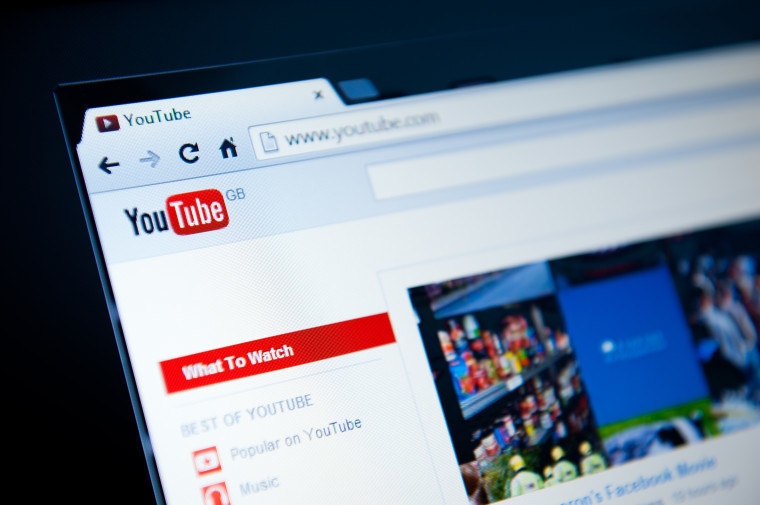
It looks like Google may finally be preparing to bring its YouTube Red subscription service to European markets this year.

And at long last, it seems Google is getting ready to roll out Android 7.1.1 Nougat to the Nexus 6, over a month after its release for other devices. The company also released its January security updates for Android this week.
Samsung began rolling out Android 7.0 to a very limited number of its Galaxy S7 handsets on Wednesday.
And with just a few hours of 2016 remaining, OnePlus made good on its promise to release its Android 7.0 upgrade to its 3 and 3T flagships before the end of the year. OnePlus delivering an update on time… is that a first?
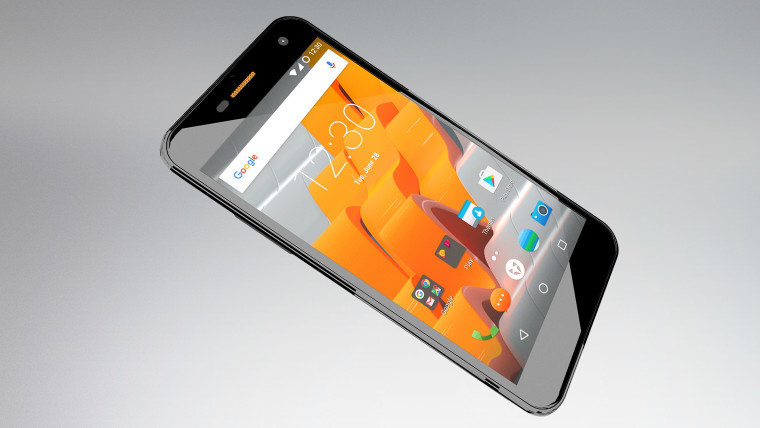
Following the recent collapse of Cyanogen, British device manufacturer Wileyfox said that it will replace Cyanogen OS on its handsets with a ‘pure’ Android experience.
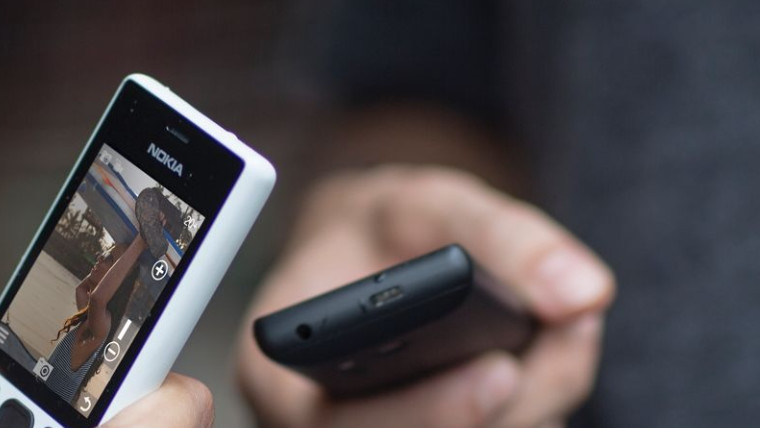
A photo showing a slide presented at a Nokia event revealed the company’s plans to launch as many as seven Android smartphones by the end of 2017. The slide proudly declared “The Empire Strikes Back”... consequently reminding everyone that Nokia’s empire, and its share price, have crumbled over the last decade.
On Saturday, a leaked image purportedly revealed key specs of the 'Nokia 6', one of the first Android smartphones on the way.

BlackBerry is another fallen mobile empire that’s trying to rise again by licensing its brand to another company to build Android devices. This week, TCL showed off its new BlackBerry phone with a QWERTY keyboard – and then said it wouldn’t talk about it until February, by which time everyone will have completely lost interest. Great strategy.

LG revealed a change of strategy for its new G6 flagship phone, confirming that it’s ditching the modular design of its current G5, which has been a sales flop.

Xiaomi unveiled a white version of its Mi MIX ‘concept’ device…
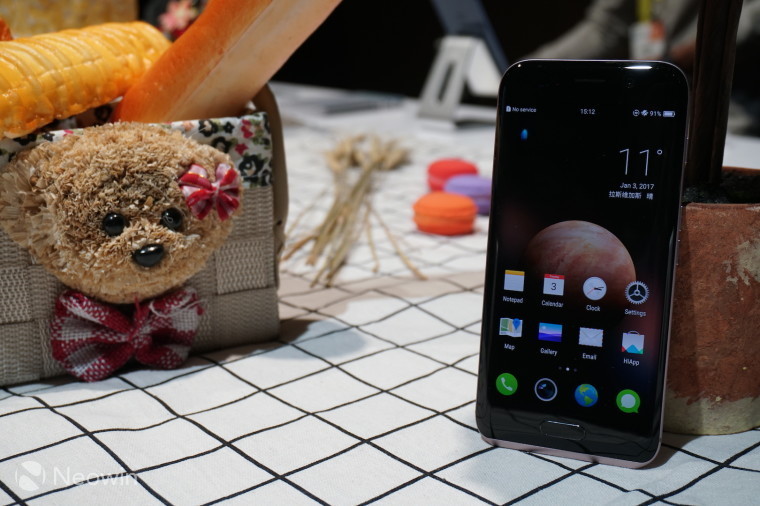
…while Huawei’s Honor brand showed off its new Magic concept device in the flesh – and we managed to get our hands on it. Honor also announced the launch of its ‘mid-range flagship’, the 6X, in the US and Europe.

Huawei brought its Mate 9 flagship to the US too, priced at $599, and revealed that it will add support for Amazon’s Alexa digital assistant later this year.

ZTE revealed its new upper-mid-range handset, the Blade V8 Pro, with a Snapdragon 625 processor, 3GB RAM, 32GB storage, 13MP camera, USB Type-C port, and more. Check out our hands-on first impressions of the device here.

Samsung unveiled its new Galaxy A series handsets – and as rumored, they all include IP68 dust- and water-resistance. That’s a very nice addition to the mid-range devices.

After the disastrous launch, and subsequent global recall, of its Galaxy Note7 flagship, Samsung said that it will reveal the findings of its investigation into the battery fires that plagued the device “later this month”.

But it looks like Samsung’s next flagship, the Galaxy S8, will include a rather intriguing feature. An image revealed the company’s plans to introduce a “desktop experience” to the new Android device with support for an external monitor, mouse and keyboard – which sounds rather a lot like the Continuum mode in Microsoft’s Windows 10 Mobile.

Microsoft was planning to release a new Fast ring preview of its Windows 10 Creators Update this week, but those plans were postponed while the company addresses some issues with the update process. However, Windows 10 Enterprise build 15002 – believed to be the same build that was due for release – leaked onto the web late on Friday night.
However, Microsoft did officially roll out Windows 10 build 14393.594 (Anniversary Update) to PCs and phones in the Release Preview ring.
Microsoft hasn’t officially provided a firm launch date for the Creators Update, saying only that it will be released in “early 2017”. But Dell let the cat out of the bag this week, confirming that the Creators Update is due to roll out in April.
_story.jpg)
The Creators Update will include support for 802.11ad Wi-Fi, and wireless docking support for that protocol will be added in a future update.

After the Creators Update, the Redstone 3 update is expected to arrive towards the end of the year. That update will include changes to the user interface, developed under the codename ‘Project Neon’ – and the first screenshots previewing Windows 10’s design refresh leaked on Thursday, showing a cleaner, less cluttered look with new blurring and transparency effects.

Microsoft promised more transparency and new insights into its Windows 10 development process this year, as it launched a new blog focused on the Windows Insider community.

Elsewhere, Microsoft hit back at inaccurate media reports (not from Neowin!), which claimed that it’s killing off its Command Prompt in the Windows 10 Creators Update. In fact, it’s prioritizing its more versatile PowerShell command line experience over the antiquated Command Prompt, but the latter will still remain in the OS.

Data from NetMarketShare revealed that Windows 10 is now installed on almost a quarter of PCs, with Windows 7 approaching 50%, and macOS X 10.11 on 4.38%.
On the Steam gaming platform, Windows 10 is now in use by more than half of all gamers, 17 months after its launch.

Meanwhile, Microsoft appears to be working on a new cross-platform media-sharing service, currently known as ‘Belize’.

Microsoft has been working with numerous automotive giants in recent months to establish its products at the heart of their connected car strategies. BMW, for example, unveiled its vision for self-driving cars with Cortana support, while Nissan is also among other major manufacturers to be working with Microsoft and its Connected Vehicle Platform.

Audi has teamed up with Nvidia on its self-driving car program, in an effort to infuse more of its vehicles with autonomous control technologies powered by artificial intelligence.
Mmm buzzwords.

Casio was among the many companies attending CES this week, revealing a new $500 Android Wear 2.0 smartwatch. Take a look at our hands-on impressions of the rugged wearable device.

But it was the giants of the tech industry that made some of the biggest announcements in the greatest numbers. Dell was among them, unveiling a series of new devices, including the Inspiron 7000 gaming laptops with Nvidia's latest GTX 1050 GPUs…

…and the Latitude 5285 and Latitude 7285 – two new business-class Windows 10 2-in-1s, promising exceptional security and versatility. The latter device also offers wireless charging support.

Dell also unveiled a new XPS 13 2-in-1, and the 27 Ultrathin Monitor…

…as well as the stunning UltraSharp 8K Monitor – the first commercially available monitor with 8K resolution, and an unsurprisingly high price tag.

But most excitingly, Dell also revealed the XPS 27 all-in-one PC, and the Canvas – an intriguing new competitor to Microsoft’s new Surface Studio. Stardock announced that it has been working with Dell on an exclusive version of its desktop organization suite, Fences, for the new Canvas PC.
Don’t miss our hands-on first impressions of Dell’s new devices here!
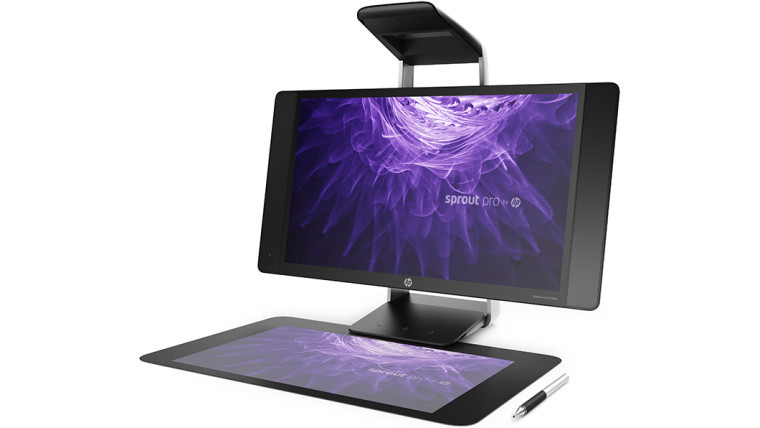
HP unveiled the second generation of its unusual Sprout Pro Windows 10 PC, which has an integrated projector and touch-mat, along with 2D and 3D scanning capabilities. Of course, we went hands-on to see what all the fuss was about – you can see it in action in our videos here.
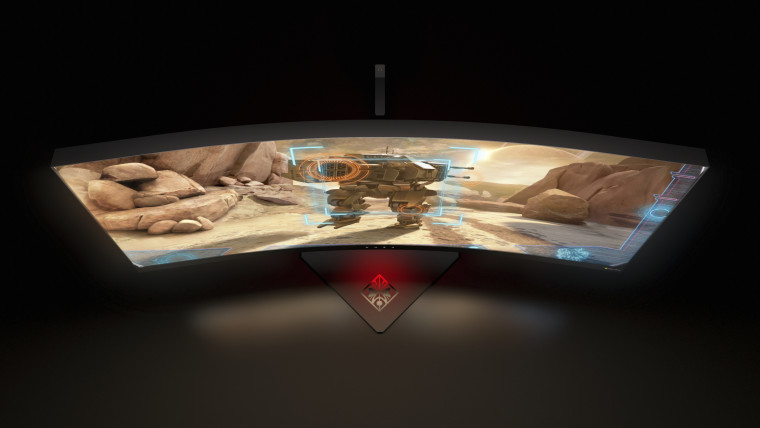
HP’s new ENVY Curve AIO 34 all-in-one PC also made its debut at CES, along with the OMEN X 35 curved monitor.

And the 15.6-inch HP Spectre x360 and EliteBook x360 also made their first appearance at the show, both with 4K displays. We went hands-on with both devices here, so make sure you check that out!

Lenovo also had plenty of announcements at CES, including that of its new Smart Assistant, an Amazon Echo-style speaker... powered by Amazon’s Alexa assistant.

Lenovo unveiled three new ThinkPad X1 devices, and the Miix 720 – a high-end Surface Pro-style tablet, including an integrated rear kickstand. Check out our hands-on videos and photos of those new devices here, along with our impressions of the Smart Assistant.
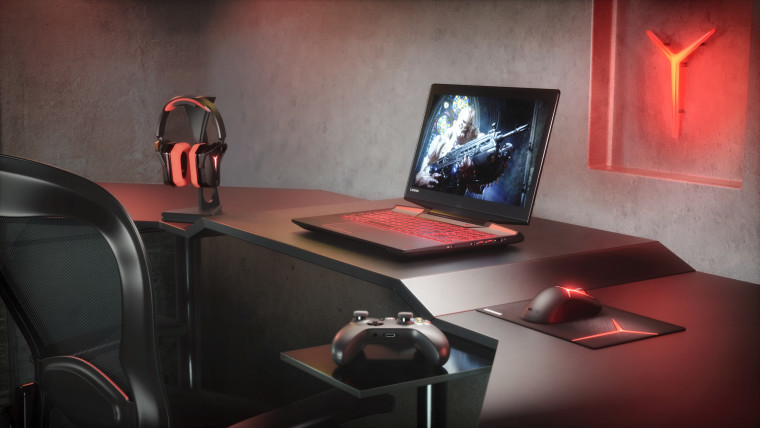
Two Lenovo gaming laptops were announced too, kicking off the company’s new line of Legion gaming PCs.

Lenovo launched its new 500 Multimedia Controller, a $55 wireless keyboard for media PCs, on which the keys also double up as a capacitive touchpad with support for Windows 10 gestures.

Last month, Microsoft revealed new information on its plans with hardware partners to launch more affordable virtual reality headsets powered by its Windows Holographic shell on Windows 10. Lenovo showed off its VR headset at CES, and said it will launch later this year for under $400.

We also got a look at new Windows Holographic VR headsets from HP, Dell and others.

CES played host to the rise of the machines, as many companies showed off home robots at the event. The cute new Kuri robotic companion is now available to pre-order for $699.

LG also displayed a range of new robots, destined for both home and commercial use.
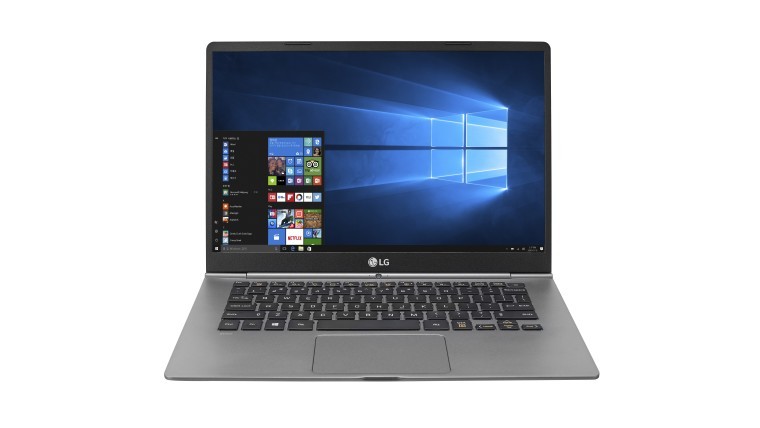
LG announced its new family of thin and light Windows 10 notebooks, claiming that they offer up to 24 hours of battery life… but we’ll have to put that claim to the test in the real world before we can believe it.
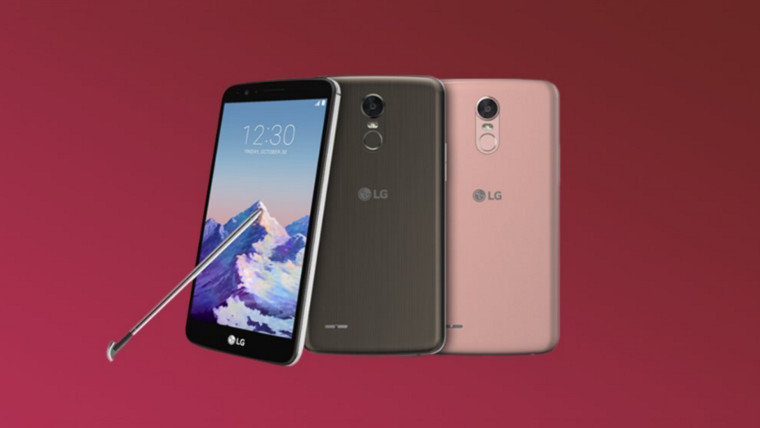
The LG Stylo 3 and 3 Plus made an appearance too. The two lower-mid-range handsets each have an integrated stylus and come with Android 7.0.
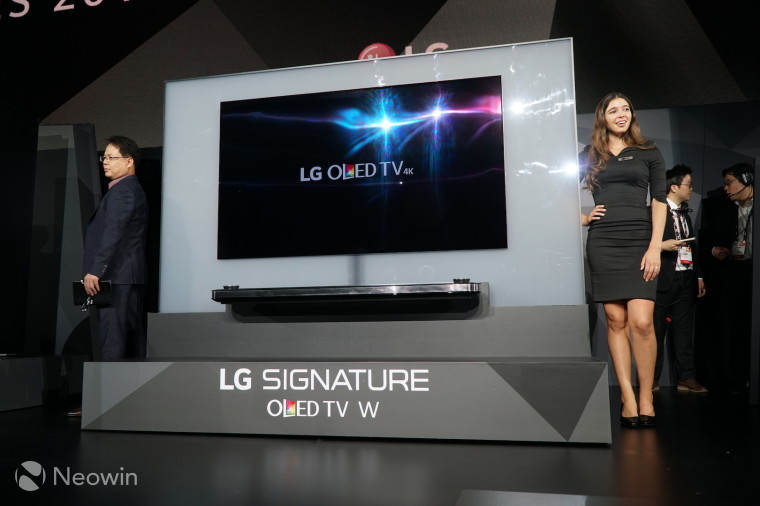
Lots of manufacturers revealed new TVs at CES, and LG was no exception. Its range of 4K TVs come with ‘Nano Cell’ technology, said to offer superior color and clarity from any viewing angle.

And like so many other devices at CES, LG’s new smart refrigerator includes Amazon Alexa voice support, along with a 29-inch touchscreen and internal camera.

Samsung also introduced a new range of smart fridges, including models with a 21.5-inch touchscreen, and its new Family Hub 2.0 software.

The Samsung Notebook Odyssey was revealed as the company’s first gaming laptop, featuring some rather meaty specs… and a rather ugly trackpad design. Bleugh.
Pre-orders also opened for Samsung’s new Notebook 9, which it calls “the lightest notebook on the market”.

Samsung believes its new ‘QLED TVs’ have what it takes to crush all of their rivals, thanks to their use of Quantum Dot technology.

Sony made quite an impression with its new ultra-thin BRAVIA OLED TV range, available in three sizes up to 77 inches. They won’t come cheap, so you’d better start saving and/or selling some body organs if you’re thinking of buying one.
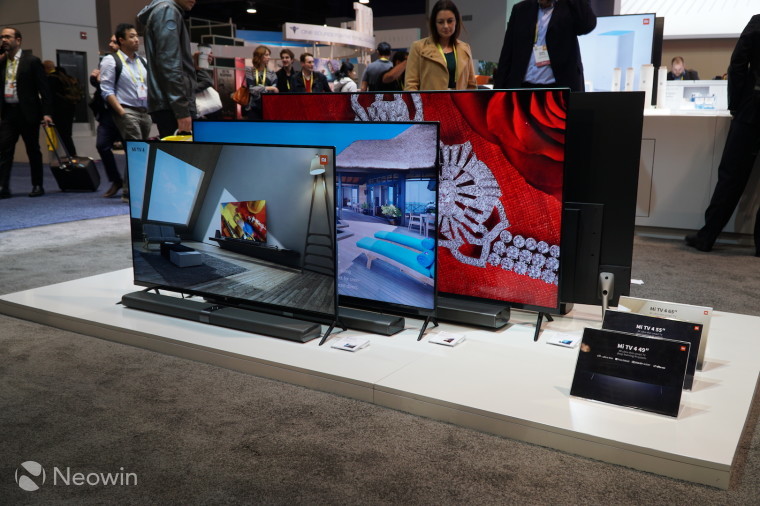
Xiaomi’s new TVs are also incredibly thin – but they’re rather interesting for another reason too. They have a modular design, which will allow owners to upgrade them in the future by adding new components.

Asus revealed new displays designed for computing. It introduced a pro-grade 32-inch 4K monitor with HDR support, along with an enormous 37.5-inch curved ultra-wide monitor, featuring ‘frameless bezels’, and integrated Qi wireless charging plate.

Asus also unveiled the ZenFone AR, the first phone in the world to support both Google’s Tango augmented reality suite, and the Daydream virtual reality platform. There’s no doubting the fact that it’s got some pretty decent specs – but it’s not exactly attractive.

Miraxess is preparing to launch a new laptop-style phone dock for Android and Windows 10 Mobile devices, similar to the $599 HP Lap Dock for its flagship-class Elite x3 handset. However, the Mirabook will cost half that amount.
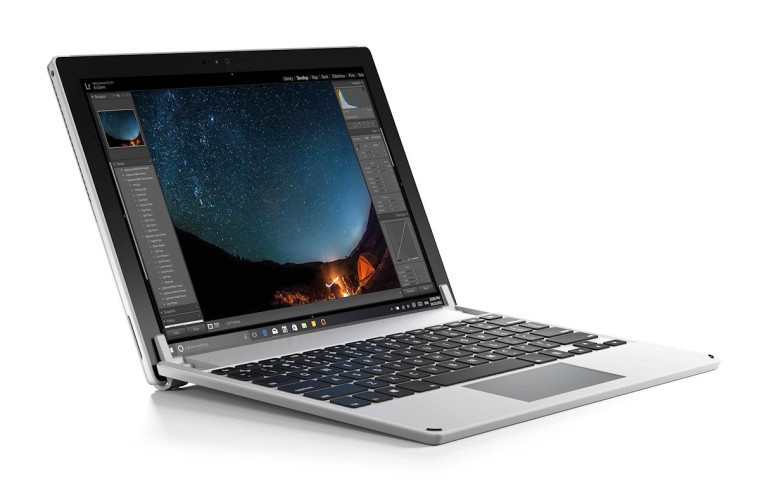
Meanwhile, Brydge revealed its new laptop-style aluminum keyboard for Microsoft’s Surface Pro 4 tablet.

There seemed to be no end of PCs on display at CES this year, so it was certainly appropriate that Endless attended the event to unveil its simple, affordable mini-PCs, priced from $129.

And after announcing the Sirius A in October, Ockel showed up at CES ready to show off the curious mini-PC in the flesh. The device has a 6-inch touchscreen, but runs the full version of Windows 10 Home, and has an integrated DisplayPort, full-size HDMI, two USB 3.0 Type-A ports, one USB 3.0 Type C port and a full-size Ethernet port too.
More photos and details of the Sirius A and Ockel’s other mini-PCs can be found here.

Toshiba turned up with a far more conventional Windows 10 device. Its new Portégé X20W notebook is a 2-in-1 that promises up to 16 hours of battery life.

Acer showed off a range of new notebooks and desktops too – but the star of its show stand was the mighty Predator 21 X gaming notebook that it announced in August. The monstrous machine – which has a curved 21-inch display – finally got a price tag… and it’s enormous.

Not to be outdone, Razer turned up to CES with an even crazier device. Project Valerie is a gloriously insane notebook with three (!!!) built-in displays, each with 4K resolution, powered by a desktop-class Nvidia GeForce GTX 1080 graphics card.
Mad. Quite mad.

Razer also took things to a whole new level with the unveiling of its Project Ariana concept, a room-scale projector that aims to turn gaming into a truly immersive experience.

Back on Planet Earth, Sony revealed that it has now sold an impressive 53.4 million PlayStation 4 consoles since its launch in 2013, including 6.2 million in just six weeks over the holiday season.

Despite being outsold by the PS4, Microsoft nonetheless celebrated its Xbox achievements in 2016, and promised an even more exciting year ahead for its gaming platform.

But this week’s odyssey around the tech world ends, appropriately, at CES, where the L’Oreal/Withings smart hairbrush won an innovation award.
All hope is lost.
Bonus content
Before we wrap things up for another week, let me first highlight a few extra bits around the site that I hope you’ll enjoy reading.

I looked back on a remarkable year for Microsoft, in which it became one of the world's most exciting tech companies. I also took a look ahead to what's in store for Microsoft in 2017 - from gaming and new devices, to productivity and mixed reality, it's set to be a year of work, play, and creativity unleashed for the company.

Vlad Dudau shared a mini-review of the MGCool Band 2, an ultra-affordable fitness tracker with some very nice features... but there's certainly room for improvement.

And Christopher White published his detailed review of the Thecus W2810PRO, a NAS (network attached storage) device running Windows Storage Server 2012 R2 Essentials. Who comes up with these names? Anyway, the W2810PRO earned itself a very good score in the review, but there are still a few downsides to be aware of.
Stay tuned to Neowin in the days ahead for what’s sure to be another exciting week, filled with official news, lots of updates, and plenty of insights from around the world of technology.
For now, though, there’s lots more to read across the site – including all sorts of interesting discussions over on our forums.
From all of us
on the Neowin team,
have a great weekend
and a very happy new year!

















